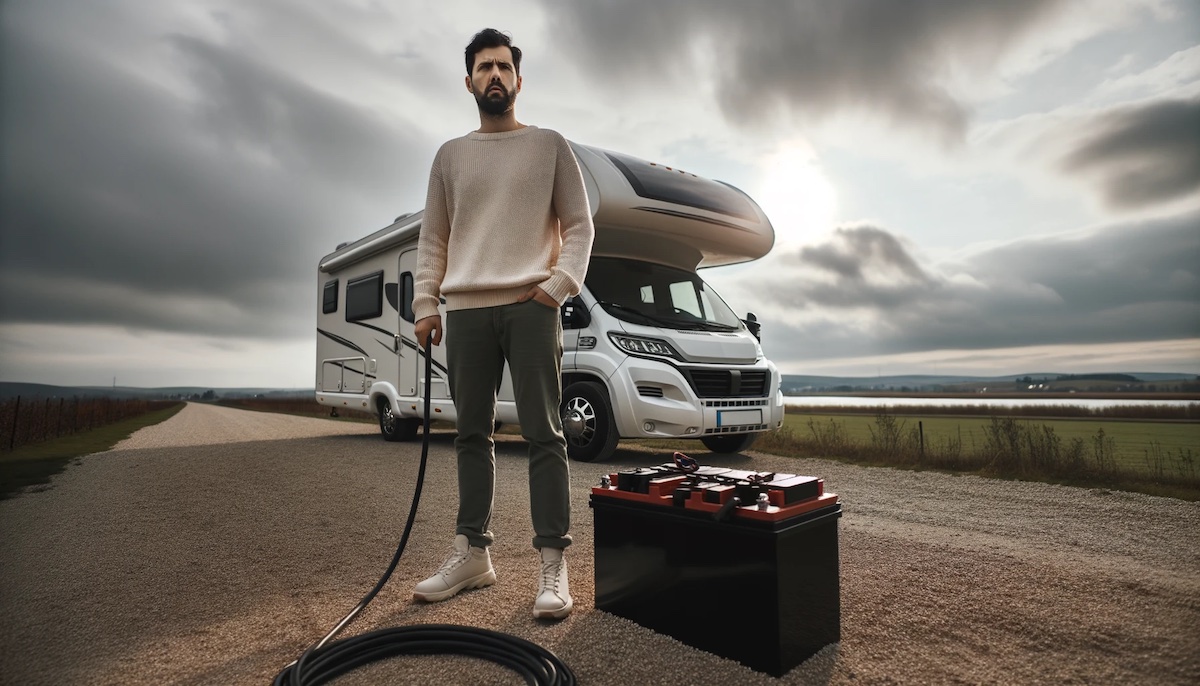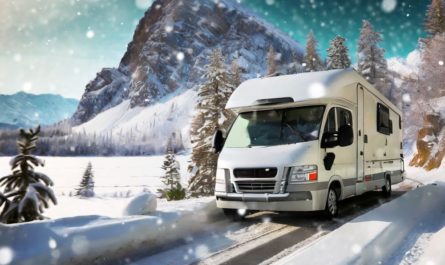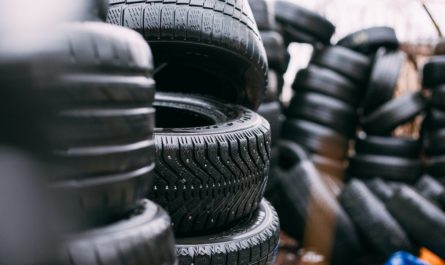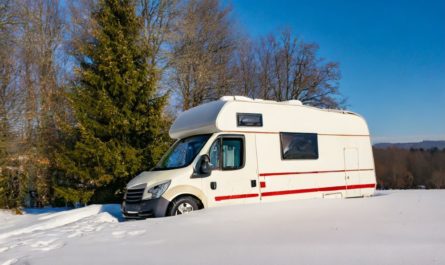What is a Motorhome?
A motorhome also called an RV (recreational vehicle), is a mobile living space that combines the comfort of a home with the mobility of a vehicle. Motorhomes are equipped with various amenities, including sleeping quarters, a kitchen, a bathroom, and living space, making them an ideal choice for those who enjoy traveling or going on road trips. They come in different sizes and configurations, offering a range of options to meet the needs and preferences of different individuals or families. Motorhomes provide a unique way to explore and experience the world, enabling travelers to have a sense of home while on the road.
How much Electricity Does a Motorhome Use?
When it comes to determining how much electricity a motorhome uses, several factors come into play. The size and weight of the vehicle can influence power consumption, as larger motorhomes tend to have more appliances and electrical systems that require electricity. Similarly, the age and condition of the appliances and electrical components also play a role, as older devices may have less energy efficiency.
The number and type of appliances and electrical devices being used in a motorhome impact electricity usage. For example, air conditioners and water heaters are power-hungry appliances that can significantly increase electricity consumption. The length of time these appliances are powered on also affects energy usage, with extended periods adding up to higher electricity costs.
Additionally, weather conditions can influence electricity consumption in a motorhome. Warm weather often leads to increased usage of air conditioning units, which can have a significant impact on power requirements. Moreover, colder weather may require the use of electric heaters or heating systems.
In summary, the amount of electricity used by a motorhome depends on various factors. These include the size and weight of the vehicle, the age and condition of appliances and electrical components, the number and type of appliances and devices being used, the length of time being powered on, and the prevailing weather conditions. Taking these factors into account can help motorhome owners understand their power consumption and make informed decisions to manage their electricity usage efficiently.
An average motorhome typically consumes around 5 to 35 kilowatt-hours (kWh) of electricity per day. This estimate considers the power needed for various appliances and systems commonly found in motorhomes, such as lighting, heating and cooling, cooking appliances, refrigeration, entertainment devices, and charging electronics.
Types of Motorhomes
Motorhomes come in various types, each offering unique features and amenities to cater to different travel preferences and needs. Class A motorhomes are the largest and most luxurious, resembling a bus or coach. With spacious interiors, they often include full-size kitchen appliances, multiple bedrooms, and bathrooms. Class B motorhomes, also known as camper vans, are smaller and more compact. They provide essential amenities in a compact space, making them ideal for solo travelers or couples. Class C motorhomes offer a middle ground between Class A and Class B, featuring a truck or van chassis with a camper body attached. They usually have a sleeping area over the cab and offer a good balance of space and maneuverability. Finally, there are towable motorhomes, including fifth wheels and travel trailers, which can be attached to a separate vehicle. These types of motorhomes provide flexibility and the ability to unhitch and explore in a smaller vehicle. With a wide range of options available, individuals can choose the motorhome type that best suits their lifestyle, travel plans, and specific needs.
Factors that Influence the Amount of Electricity Used by a Motorhome
Several factors can affect the amount of electricity consumed by a motorhome. One of the most significant factors is the use of appliances and electrical devices such as air conditioners, water heaters, and electrical systems. The type and number of appliances used, as well as their energy consumption rates, will impact the overall electricity usage. Another factor to consider is the source of power. Motorhomes can be powered by shore power, battery power, or alternative power sources such as solar energy or portable generators. The power requirements and usage will vary depending on the chosen power source. Additionally, the length of time the motorhome is in use and the frequency of use will also affect energy consumption. Extended periods of use, especially in warm weather, may require more electricity for air conditioning and other appliances. Ultimately, the level of electricity usage in a motorhome can vary depending on individual needs, energy-efficient appliances, and the availability of power sources.
Size and Weight of the Vehicle
The size and weight of a motorhome can significantly impact its electricity usage. Larger and heavier motorhomes generally require more power to operate all the appliances and electrical devices within them.
The size of the motorhome directly affects the amount of space available for appliances. Larger motorhomes often have more appliances and electrical systems, such as air conditioners, water heaters, and electric heaters. These appliances consume electricity and the more appliances there are, the higher the electricity usage.
Similarly, the weight of the motorhome can also impact its electricity consumption. Heavier motorhomes tend to have larger systems and additional power requirements. For example, a motorhome with a built-in generator or solar setup may consume more electricity to power itself.
Overall, the size and weight of the motorhome play a crucial role in determining its energy consumption. Owners need to consider their power requirements when choosing a motorhome, as it can have significant implications for both cost and environmental impact.
Age and Condition of the Appliances and Electrical Components
The age and condition of the appliances and electrical components in a motorhome can significantly influence the amount of electricity used. Older appliances and electrical components may be less energy-efficient and consume more power compared to newer models.
Common appliances found in motorhomes include air conditioners, water heaters, electric heaters, and various electrical systems. It is crucial to maintain these appliances in good working condition to minimize energy consumption. Regular maintenance and servicing can help ensure that the appliances are running efficiently and using electricity effectively.
Additionally, outdated electrical components such as wiring and circuit breakers can also impact power consumption. Faulty or worn-out wiring can lead to electrical inefficiencies, resulting in increased electricity usage. Therefore, it is important to regularly inspect and upgrade these components to maintain optimal energy efficiency.
Motorhome owners should consider the age and condition of the appliances and electrical components when assessing their electricity usage. Upgrading to newer, energy-efficient models and investing in proper maintenance can help minimize power consumption and reduce overall energy costs.
Number and Type of Appliances and Other Electrical Devices Being Used
In a motorhome, the number and type of appliances and electrical devices can vary depending on the size of the vehicle and the specific needs of the occupants. Common appliances found in motorhomes include air conditioners, water heaters, electric heaters, refrigerators, microwave ovens, televisions, and lighting fixtures.
However, it is important to note that the size and power consumption of these appliances can differ significantly when compared to those found in traditional homes. Motorhome appliances are typically designed to be more compact and energy-efficient to accommodate the limited space and power supply available in these vehicles.
For example, motorhome air conditioners may have lower cooling capacities compared to their residential counterparts, while water heaters may have smaller tanks or be on-demand models to conserve energy. Lighting fixtures and televisions may also use energy-efficient LED technology to minimize power consumption.
Furthermore, motorhomes often rely on alternative power sources such as solar energy or built-in generators to supplement their electrical needs, especially during extended periods of camping without access to shore power. This allows for greater flexibility and reduced dependency on external electrical hookups.
Overall, the number and type of appliances and electrical devices in a motorhome are tailored to the unique requirements of living on the move, balancing functionality, space-saving design, and energy efficiency.
Length of Time Being Powered On
The length of time a motorhome is powered on directly affects its electricity usage. The longer the vehicle remains powered on, the higher the electricity consumption will be. This is because every minute the motorhome is running, its electrical systems, appliances, and devices continue to draw power.
Extended periods of being powered on can significantly increase electricity consumption. This is particularly true when motorhomes are used for activities such as camping or traveling for extended periods without access to external power hookups. During these periods, motorhome owners heavily rely on alternative power sources such as generators or solar energy to meet their electrical needs. However, running these power sources for a prolonged duration can result in higher energy consumption.
Certain appliances and electrical devices also contribute to increased power usage over extended periods. Air conditioning units, water heaters, and heating systems, in particular, can consume substantial amounts of electricity when used for prolonged periods. Additionally, electrical appliances like refrigerators, televisions, and lighting fixtures continue to draw power as long as the motorhome remains powered on.
Therefore, motorhome owners need to be mindful of the length of time their vehicle is powered on, as longer periods of being powered on can lead to higher electricity consumption. By managing their energy usage efficiently and considering alternative power sources, motorhome owners can mitigate the impact on their electricity bills while enjoying their time on the road.
Weather Conditions
Weather conditions play a significant role in determining the amount of electricity used by a motorhome. Extreme temperatures, whether very hot or very cold, can have a noticeable impact on the energy consumption of appliances and electrical systems.
In hot weather, air conditioning units become essential to keep the motorhome interior cool and comfortable. However, these units require a substantial amount of electricity to operate, particularly when running for extended periods. High temperatures can also cause refrigerators to work harder to maintain the desired temperature, resulting in increased energy consumption.
Conversely, during cold weather, heaters are often utilized to provide warmth inside the motorhome. Similar to air conditioners, heaters can consume a significant amount of electricity to maintain a comfortable temperature. Heating systems may need to work harder in extremely cold conditions, leading to higher energy usage.
Motorhome owners need to be mindful of weather conditions and adjust their power usage accordingly. This may involve finding alternative power sources, optimizing energy-efficient appliances, or utilizing renewable energy sources such as solar power. By considering weather conditions and taking appropriate measures, motorhome owners can effectively manage their power consumption and reduce energy costs.



